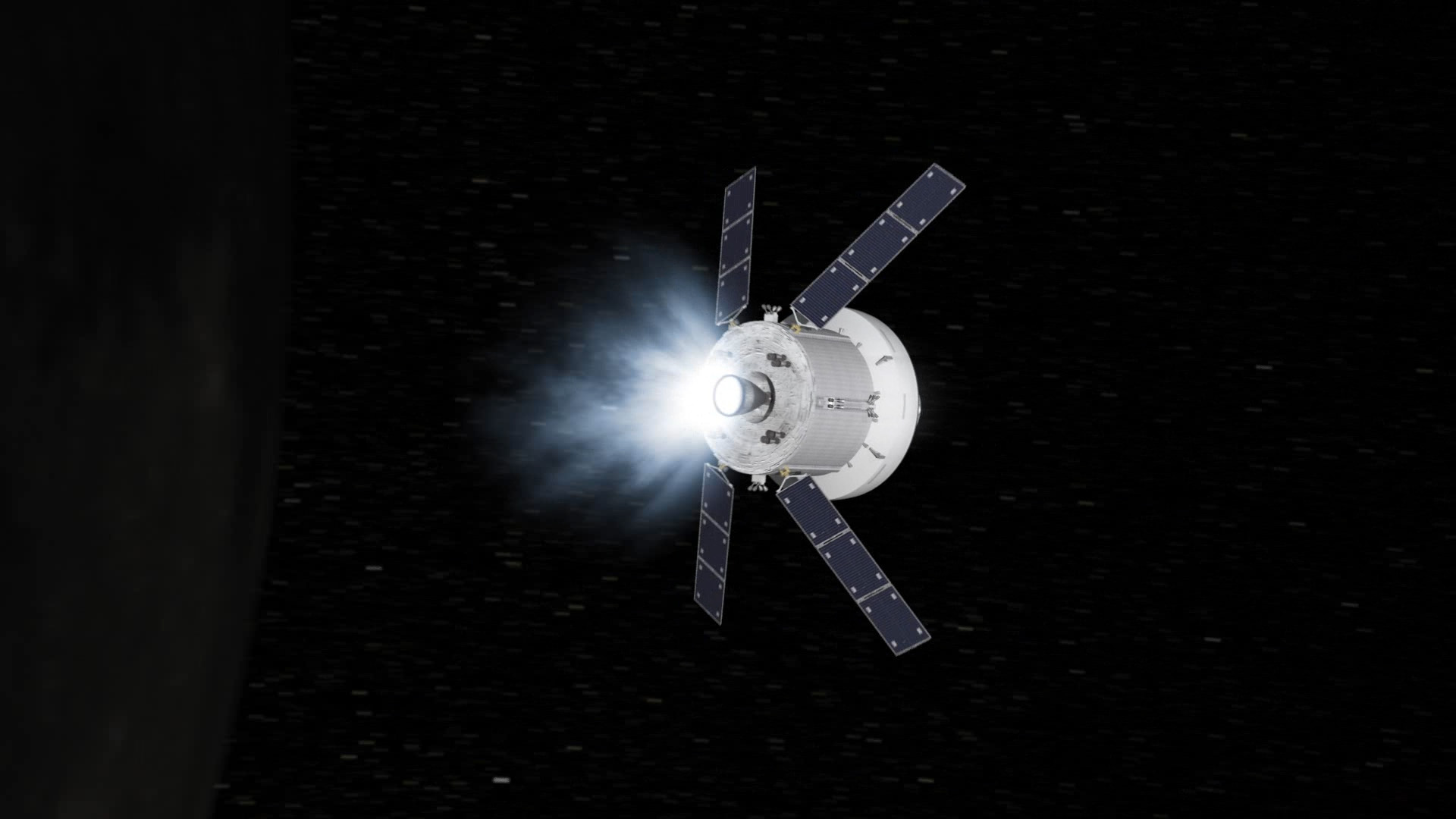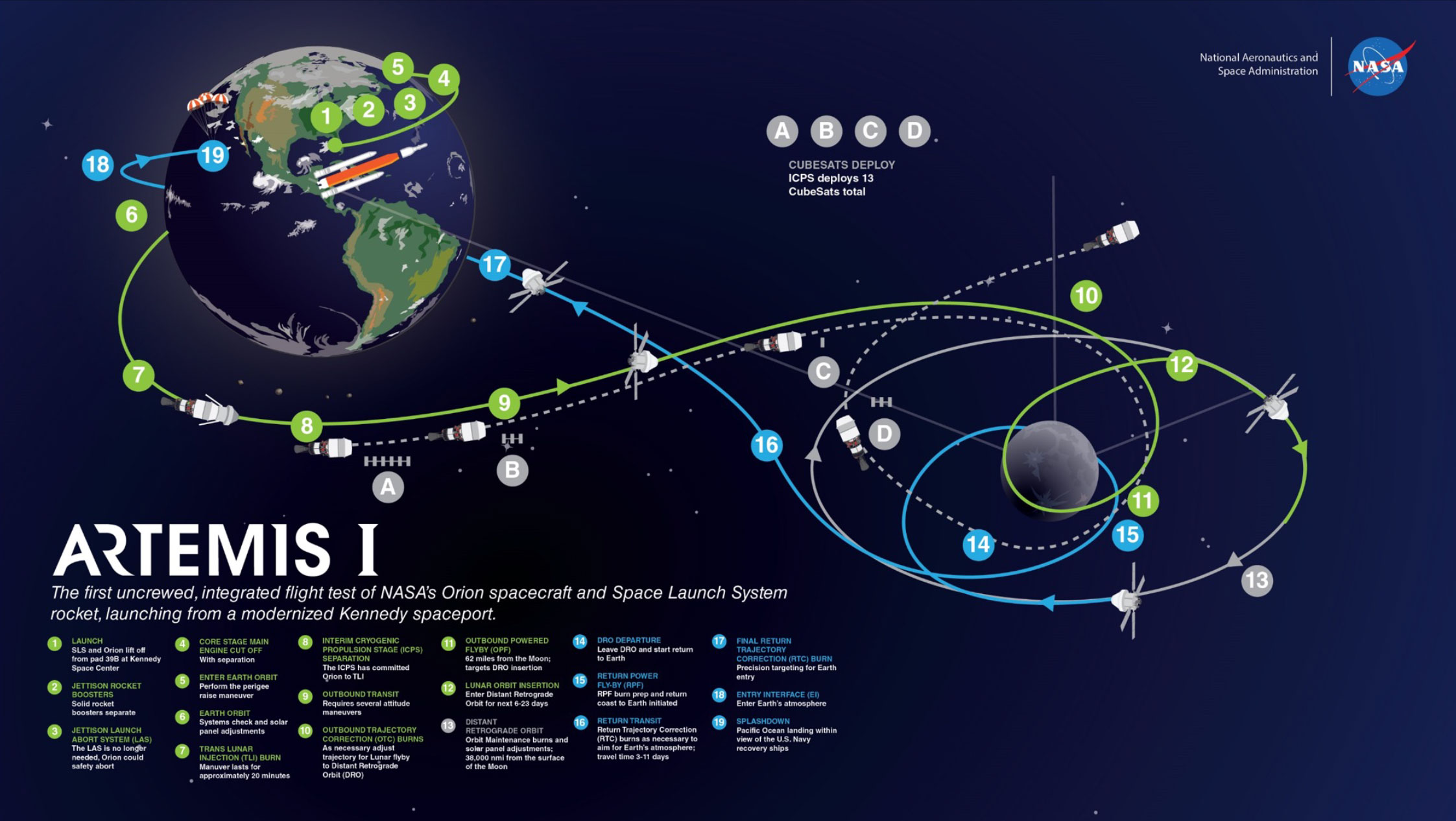


It is unclear whether the rocket would have launched even if all the technical issues had been solved as it started to rain shortly after 8.30am. “We’re not sure why, we’ve not sure when we can try again.” “There was a problem with feeding cold gas into the engines before launch to prepare them for the shock of lighting and having all the propulsion suddenly flowing through them, they had to be in a very strict temperature range before they could do that. US astronaut Stan Love, an advisor for the mission, said: “I came down here really hoping to see the smoke and fire but unfortunately we did not launch today. With time running out, and no solution presenting itself, Nasa abandoned the launch. It emerged that the system had never been tested in rehearsals.
#ARTEMIS 1 LAUNCH TIME CRACK#
Just as the weather cleared up, the launch was hit with another worrying issue - a hydrogen leak similar to the kind seen during April’s wet dress rehearsal, which caused the fuelling test to be scrubbed.Īlthough the problem was fixed, and the main tanks filled by 5am, a new crisis emerged almost immediately afterwards, with a suspected crack in the rocket’s thermal casing.Īn investigation proved the issue was not fatal, but by then engineers had released engine number three was not cooling down sufficiently despite being flooded with liquid hydrogen. Launching in the volatile Florida summer is less than ideal, but technical issues earlier in the year left Nasa no choice but to try and get the mega Moon rocket up before the weather got worse. Storms had dogged the mission all week, with one of the lightning towers surrounding the spacecraft suffering a direct hit on Saturday afternoon. Just as that system began to dissipate, a new weather cell was spotted in the north east and the green light to start filling the huge tanks was not given until 1.14am local time, leaving the launch an hour behind schedule.
#ARTEMIS 1 LAUNCH TIME FULL#
Such was the mounting excitement that reporters and VIPs were advised to be at the press site at midnight, a full eight and a half hours before the launch window opened, to avoid traffic.īut problems started soon after, when a worrying lightning storm moved in from the south, delaying fuelling until it passed over. From around lunchtime on Sunday cars, tents and campervans began building alongside the Indian and Banana rivers which separate the mainland from the cape. The cancellation was a bitter blow for the thousands who had flocked to the beaches around Cape Canaveral to watch the first launch of the Artemis mission, which has been billed as this generation’s Apollo and is aiming to put astronauts back on the lunar surface by 2025.Īt Kennedy Space Centre, the fervour had been clear to see. Now it appears that many issues are still to be ironed out, while new snags are only just emerging. It is the latest compilation to beset the Artemis programme which was due to launch in 2021, but fell behind schedule before being hit by a string of technical failures during dummy runs earlier this year. Just minutes after the lift-off window opened at 8.33am local time in Florida, launch director Charlie Blackwell-Thompson took the decision to scrub the ascent, after engineers failed to find a solution to the coolant issue. The specific moment depends on the exact liftoff time.The motto of the Artemis mission has always been “We are going!”īut on Monday, it was clear Nasa’s mega Moon rocket was going nowhere, following a fraught eight hours which saw weather delays, a suspected crack in the thermal casing, a hydrogen leak and, finally, a fatal engine cooling problem. EDT: Reporting on the first Earth images seen while travelling to the Moon from Orion. The precise time is based on the precise liftoff time.ġ0:15 p.m. EDT: Reporting on the first burn of Orion's outbound trajectory as it approaches the Moon. EDT: A post-launch news conference will take place about an hour following the launch.ĩ:45 p.m. EST on separate feeds on Twitter, Facebook and YouTube).Ģ:17 PM until 4:47 PM. The exact timetable and certain activities you shouldn't miss in the hours following the launch are listed below:Įnglish-language live launch coverage starts at 12:15 EST (Spanish is at 1:00 p.m.
#ARTEMIS 1 LAUNCH TIME TV#
EDT, even though programming for tanking operations to load propellant into the SLS rocket starts at 5:45 a.m.Īdditionally, NASA TV is accessible via Facebook, Twitch, the NASA website, and in 4K on the NASA UHD channel. The actual launch coverage begins at 12:15 p.m. NASA On Saturday, September 3, 2022, YouTube will have full coverage of the debut. When and where to view the launch of Artemis-1 The launch window is available from 2:17 PM to 4:17 PM Eastern Time. A launch attempt for Artemis-1 is now planned for Saturday, September 3, 2022.


 0 kommentar(er)
0 kommentar(er)
